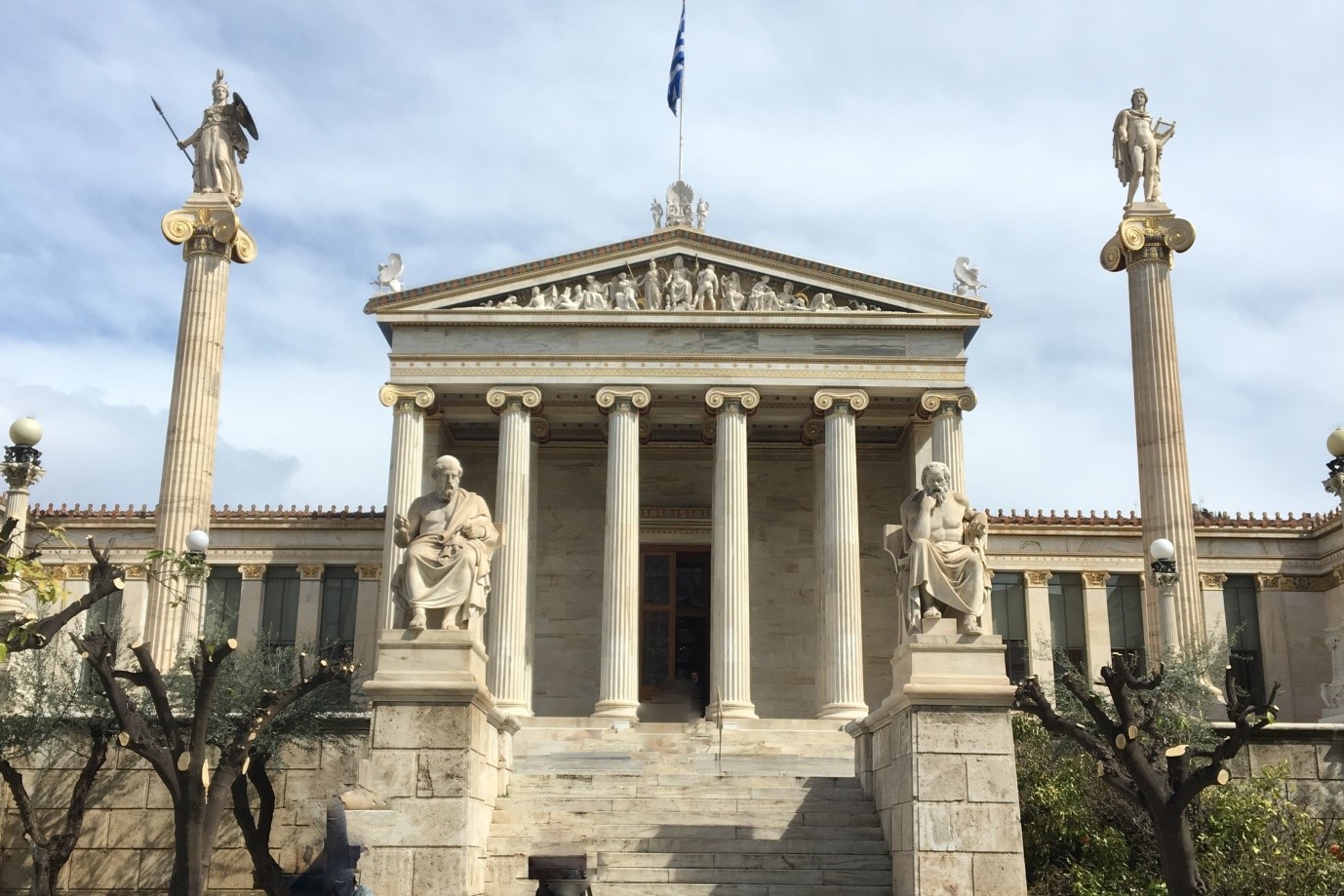Academy of Athens
The main purpose of the Academy of Athens is the advancement of the Sciences, Humanities, and Fine Arts through the individual research and activities of its members, the collaboration between its members and other Academies, the conduct of research in its Research Centers and Offices, and the support of the work of scientists, artists and literary personalities outside the circle of the Academy’s own members. The Academy has a Library containing 200,000 titles.
The Academy building, of the Ionic order, was erected according to the design of the famous Danish architect Theophil Hansen, on a site donated by the Municipality of Athens and the Petraki Monastery. The foundation stone was laid in 1859 and the building was completed in 1887 and presented to then Prime Minister Charilaos Trikoupis by the architect Ernst Ziller, Hansen’s assistant.

The masterpiece of the Erechtheion inspired Theophil Hansen for the architectural elements of the Ionic Order which characterizes the edifice. On the exterior, the building has rich sculptural decoration, the main element of which is the central pediment, which depicts Athena’s birth and is the work of the sculptor Leonidas Drossis. The eight smaller pediments of the side wings with sculptural compositions were the work of Franz Melnitzky.
The two statues of Apollo the Lyre-player and Athena Promachos, both on tall Ionic columns, are the work of Leonidas Drossis. They symbolize the continuation of the ancient Greek spirit by the Academy, a spirit which is personified by the two gods and the two philosophers, Socrates and Plato, whose seated statues in front of the building were also created by Leonidas Drossis.
The painted decoration of the Assembly Hall consists of eight panels executed in oil on canvas by the painter Christian Griepenkerl , a student of Carl Rahl. The paintings are related to the prevailing nineteenth century notions about the role of the academies as bearers of wisdom and light. Their theme is the myth of Prometheus about man’s creation and his gift of fire and light.
The eight panels depict this myth, starting from the left side of the doorway to the Hall. On the first panel, Prometheus’ mother, Themis, prophesies her son’s future fate. On the second panel Prometheus, with Athena’s help, is ready to take the fire from the Sun. The third panel depicts the creation of man. On the fourth panel, which is on the wall facing the entrance to the Hall, a scene of Titanomachy depicts the victory of the Olympian gods over the Titans.

Photo by Tetraktys, Own work, CC BY-SA 3.0, https://commons.wikimedia.org/w/index.php?curid=4272146
On the fifth panel, on the wall to the right, Prometheus brings light and fire to men. On the sixth, Prometheus is depicted bound on Mount Caucasus with the eagle devouring his liver. On the seventh, Heracles releases Prometheus. On the eighth panel, extending over the entrance door, Heracles introduces Prometheus to Olympus. The paintings are characterized by the monumentality of the figures, the heroic pathos, and the idealistic elements, with forms borrowed from the Great Masters of the sixteenth century, especially Michelangelo, and the baroque tradition.
Last update on March 26, 2017 |










